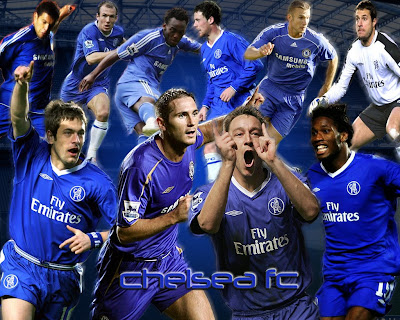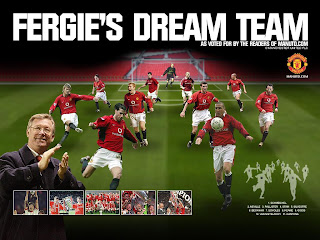Particulate matter formed from gaseous primary pollutants and compounds in photochemical smog .Smog is a kind of air pollution; the word "smog" is Air pollution
From Wikipedia, the free encyclopedia
Air pollution is the introduction of chemicals, particulate matter, or biological materials that cause harm or discomfort to humans or other living organisms, or damages the natural environment, into the atmosphere.
The atmosphere is a complex, dynamic natural gaseous system that is essential to support life on planet Earth. Stratospheric ozone depletion due to air pollution has long been recognized as a threat to human health as well as to the Earth's ecosystems.
Air pollution from World War II production.
Contents
• 1 Pollutants
• 2 Sources
o 2.1 Emission factors
• 3 Indoor air quality (IAQ)
• 4 Health effects
o 4.1 Effects on cystic fibrosis
o 4.2 Effects on COPD
o 4.3 The Great Smog of 1952
o 4.4 Effects on children
o 4.5 Health effects in relatively "clean" areas
• 5 Reduction efforts
o 5.1 Control devices
• 6 Legal regulations
o 6.1 Canada
o 6.2 European Union
6.2.1 United Kingdom
o 6.3 United States
• 7 Statistics
o 7.1 Most polluted cities
o 7.2 Carbon dioxide emissions
• 8 Atmospheric dispersion
• 9 Environmental impacts of greenhouse gas pollutants
• 10 See also
• 11 References
• 12 External links
Pollutants
Main article: Pollutant
Before flue gas desulfurization was installed, the emissions from this power plant in New Mexico contained excessive amounts of sulfur dioxide.
An air pollutant is known as a substance in the air that can cause harm to humans and the environment. Pollutants can be in the form of solid particles, liquid droplets, or gases. In addition, they may be natural or man-made.[1]
Pollutants can be classified as either primary or secondary. Usually, primary pollutants are substances directly emitted from a process, such as ash from a volcanic eruption, the carbon monoxide gas from a motor vehicle exhaust or sulfur dioxide released from factories.
Secondary pollutants are not emitted directly. Rather, they form in the air when primary pollutants react or interact. An important example of a secondary pollutant is ground level ozone - one of the many secondary pollutants that make up photochemical smog.
Note that some pollutants may be both primary and secondary: that is, they are both emitted directly and formed from other primary pollutants.
About 4 percent of deaths in the United States can be attributed to air pollution, according to the Environmental Science Engineering Program at the Harvard School of Public Health.
Major primary pollutants produced by human activity include:
• Sulfur oxides (SOx) - especially sulfur dioxide, a chemical compound with the formula SO2. SO2 is produced by volcanoes and in various industrial processes. Since coal and petroleum often contain sulfur compounds, their combustion generates sulfur dioxide. Further oxidation of SO2, usually in the presence of a catalyst such as NO2, forms H2SO4, and thus acid rain.[2] This is one of the causes for concern over the environmental impact of the use of these fuels as power sources.
• Nitrogen oxides (NOx) - especially nitrogen dioxide are emitted from high temperature combustion. Can be seen as the brown haze dome above or plume downwind of cities.Nitrogen dioxide is the chemical compound with the formula NO2. It is one of the several nitrogen oxides. This reddish-brown toxic gas has a characteristic sharp, biting odor. NO2 is one of the most prominent air pollutants.
• Carbon monoxide - is a colourless, odourless, non-irritating but very poisonous gas. It is a product by incomplete combustion of fuel such as natural gas, coal or wood. Vehicular exhaust is a major source of carbon monoxide.
• Carbon dioxide (CO2) - a greenhouse gas emitted from combustion but is also a gas vital to living organisms. It is a natural gas in the atmosphere.
• Volatile organic compounds - VOCs are an important outdoor air pollutant. In this field they are often divided into the separate categories of methane (CH4) and non-methane (NMVOCs). Methane is an extremely efficient greenhouse gas which contributes to enhanced global warming. Other hydrocarbon VOCs are also significant greenhouse gases via their role in creating ozone and in prolonging the life of methane in the atmosphere, although the effect varies depending on local air quality. Within the NMVOCs, the aromatic compounds benzene, toluene and xylene are suspected carcinogens and may lead to leukemia through prolonged exposure. 1,3-butadiene is another dangerous compound which is often associated with industrial uses.
• Particulate matter - Particulates, alternatively referred to as particulate matter (PM) or fine particles, are tiny particles of solid or liquid suspended in a gas. In contrast, aerosol refers to particles and the gas together. Sources of particulate matter can be man made or natural. Some particulates occur naturally, originating from volcanoes, dust storms, forest and grassland fires, living vegetation, and sea spray. Human activities, such as the burning of fossil fuels in vehicles, power plants and various industrial processes also generate significant amounts of aerosols. Averaged over the globe, anthropogenic aerosols—those made by human activities—currently account for about 10 percent of the total amount of aerosols in our atmosphere. Increased levels of fine particles in the air are linked to health hazards such as heart disease, altered lung function and lung cancer.
• Toxic metals, such as lead, cadmium and copper.
• Chlorofluorocarbons (CFCs) - harmful to the ozone layer emitted from products currently banned from use.
• Ammonia (NH3) - emitted from agricultural processes. Ammonia is a compound with the formula NH3. It is normally encountered as a gas with a characteristic pungent odor. Ammonia contributes significantly to the nutritional needs of terrestrial organisms by serving as a precursor to foodstuffs and fertilizers. Ammonia, either directly or indirectly, is also a building block for the synthesis of many pharmaceuticals. Although in wide use, ammonia is both caustic and hazardous.
• Odors - such as from garbage, sewage, and industrial processes
• Radioactive pollutants - produced by nuclear explosions, war explosives, and natural processes such as the radioactive decay of radon.
Secondary pollutants include:
a portmanteau of smoke and fog. Classic smog results from large amounts of coal burning in an area caused by a mixture of smoke and sulfur dioxide. Modern smog does not usually come from coal but from vehicular and industrial emissions that are acted on in the atmosphere by sunlight to form secondary pollutants that also combine with the primary emissions to form photochemical smog.
• Ground level ozone (O3) formed from NOx and VOCs. Ozone (O3) is a key constituent of the troposphere (it is also an important constituent of certain regions of the stratosphere commonly known as the Ozone layer). Photochemical and chemical reactions involving it drive many of the chemical processes that occur in the atmosphere by day and by night. At abnormally high concentrations brought about by human activities (largely the combustion of fossil fuel), it is a pollutant, and a constituent of smog.
• Peroxyacetyl nitrate (PAN) - similarly formed from NOx and VOCs.
Minor air pollutants include:
• A large number of minor hazardous air pollutants. Some of these are regulated in USA under the Clean Air Act and in Europe under the Air Framework Directive.
• A variety of persistent organic pollutants, which can attach to particulate matter.
Persistent organic pollutants (POPs) are organic compounds that are resistant to environmental degradation through chemical, biological, and photolytic processes. Because of this, they have been observed to persist in the environment, to be capable of long-range transport, bioaccumulate in human and animal tissue, biomagnify in food chains, and to have potential significant impacts on human health and the environment. AIR


















